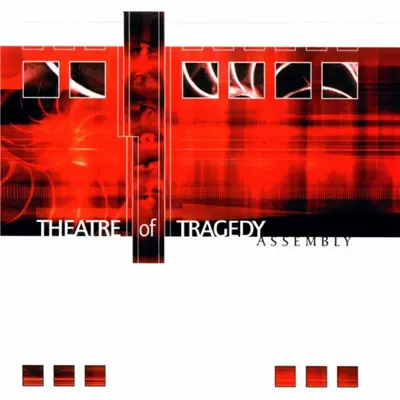Introduction
Dynafel is safe, but the rebuilding is slow. The players have been free to do as they please and may even have travelled back with King and Queen tiKalloban to Mulen, the Iscobal capital, to receive commendations or awards (or perhaps punishments depending on their actions). Regardless, the events of the last few days are firmly in the past and it may be a few days since then, or a few months.
In travelling performance troupe rolls through wherever the players are holding up it turns out they are retelling a fictionalised account of the “Nightmare of Dynafel” as it’s become known. The actors and actresses put on a play and the players, if it’s revealed who they are, are invited to attend for free as guests of honour.
Getting the Players Involved
The players might be interested in seeing their adventures retold by a travelling acting troupe. If not, they may be interested when they discover one of the group is no other than Tzenbroen (which, if they killed him, might be even more of a shock). If the players haven’t been involved in the previous adventures, the scenes act as an interesting way to make the world seem more interesting and full of events that happens outside of the players sphere of influence.
Flickerlight
The acting troupe take a few hours to set up their stage in a bigtop on the outskirts of town. Wagons roll up and equipment is loaded out and set up. The actors have in their possession some interesting numenera artifacts that allow them to work with holograms and lights and flickering images can be seen from the grounds as the setup continues.
As night falls, the bigtop comes alive with lights and earlier throughout the day, members of the troupe travel around town, telling people about the event and, most importantly, selling tickets - hand-written scrips with a red ink seal in the shape of a triangle with a line sticking out of one of the edges. Tickets cost 5 shins each, but if the players are invited they get in for free.
The play opens with Tzenbroen as a narrator of sorts, narrating the story of the Assembly, alone and trapped in another world through spoken word and interpretive dance. Alone on stage, he paints a tragedy, a lone woman lost in another reality, looking for a way out of her eternal loneliness. Various holograms flicker to life, showing starscapes and spaceships. Tzenbroen wraps up his tale by telling the audience the machine reached out into another world to find a companion, but what it didn’t know was that it’s actions would set in motion a chain of events that would end in tragedy!
Liquid Man
The play continues and the scene is changed to a world of dreams, holograms flying across the bigtop and Tzenbroen alone, sleeping. A window opens above and a woman sits silhouetted within. Clearly more of an opera, the woman sings of her loneliness and asks if anyone out there can send people to bring her to their world. Suddenly Tzenbroen awakens, his eyes glowing.
When they look into my eyes, they shall see her plight! Cross the barrier of dreams and take flight!
Then he collapses to sleep again.
The next few scenes cover the tragic story of Tzenbroen and how this ‘gift’ of his to pass on the womans message is warped, driving people from their own lives to seek out the woman. Holograms, actors and dancers convey tales of how Tzenbroen’s victims make their way to Dynafel, only to become ghosts and fade away.
Through the clever use of phase-changing artifacts, the actors paint a tale of a dream world behind our own and the people crossing over whilst people in the real world panic at the ghosts in their midst. Eventually, a group of people come to put a stop to the ghosts and go to the Dreaming Reliquary. The people cross over into the dream world and find the woman, sailing through the stars in a dream-ship. However, there is a storm and the people are lost at sea. Using the holograms and phasing, they show the people thrown from the vessel and appearing back in the real world, but the woman from the dream world is lost and caught in an immense tree.
Motion
The final act of the play has the city overcome by a great sleep as the woman tries to escape the tree, but in doing so causes Dynafel to fall asleep. The heroes from before face the tree and enter the storms of dreams within. The play turns into a display of acrobatics, with actors and acrobats flying and whirling across the stage and the air above, dancing in the air as the woman and the heroes can not understand each other. The woman just wants to be free, but the heroes are trying to save the city. Eventually, in an act of misunderstanding, the woman is slain, the tree dies and the city is saved.
Aftermath
The play is controversial at best. Whilst most of the citizens are not aware of the facts (and perhaps the players are not fully aware of them either), painting the cities plight as an act of misunderstanding towards an alien entity does not necessarily go down well with the wounds still so raw. Some find the plays portrayal of their ‘enemy’ as sympathetic insulting and it’s possible that some might even resort to violence to voice their discontent, especially if they lost loved ones in the tragedy.
What the players make of this portrayal of events is up to them.
The Tzenbroen in the troupe is not the same one, though he is identical. It appears there are more than one and he became aware of his other automaton brothers after the defeat of the Assembly, almost like they all received some kind of message from the datasphere, linking them together. He is not sure how many there are out there, but he and the one in Yenth are far from the only two. If asked by the players about the play, he says he pieced it together from fragments learned and overheard and from the mysterious databurst from the datasphere he received.

